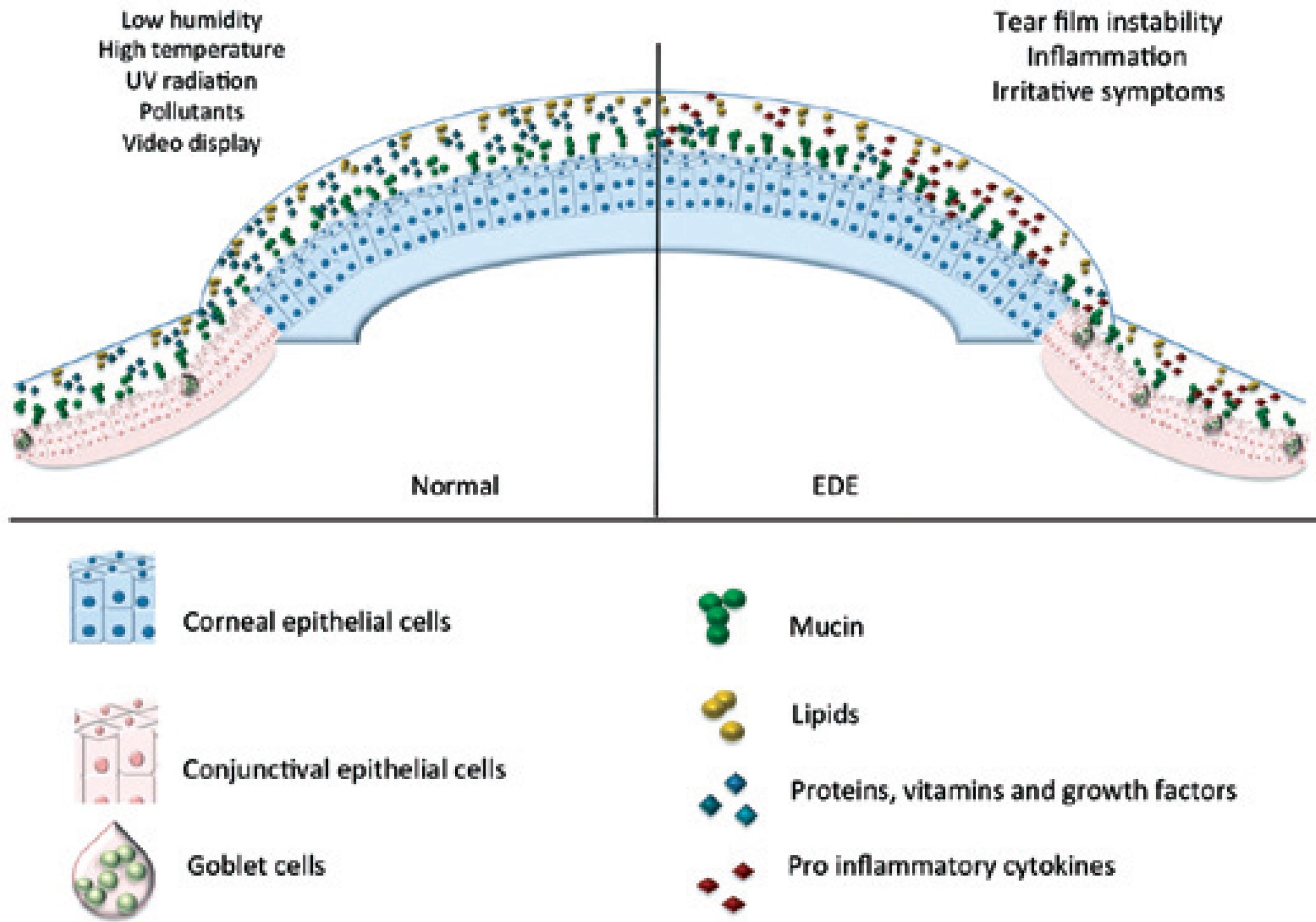Previous studies have revealed that eye contact with either air pollutants or adverse indoor and/or outdoor environmental conditions can affect tear film composition and ocular surface components. These effects are mediated by selective binding of the environmental agents to ocular surface membrane receptors, leading to activation of pro inflammatory signaling pathways. The aim of the current review was to examine the published evidence associated with environmental factors and ocular surface disease and dry eye. Specifically, the reader will appreciate why it is possible to refer to them as mediators of Environmental Dry Eye Disease (EDED), a singular clinical entity inside DED context, directly caused by pollutants and/ or adverse climatic conditions. The indicators and clinical findings are described along with EDE differential diagnosis in its acute and the chronic phases. Based on strong existing evidence of clinical reports and epidemiological observations regarding DED and environmental factors we conclude that there is a straight cause-and-effect relationship between ambient stresses and DED. International standards and web-based tools are described for monitoring worldwide environmental conditions referring localities and populations susceptible to EDED. This information is beneficial to health providers to pinpoint the individuals and predisposed groups afflicted with DED. Such insights may not only improve the understanding and treatment of DED but also help to identify the contributing factors and lower the frequency and progression of EDED.
Dry eye syndromes; Lacrimal apparatus diseases; Environmental illness; Environmental pollutants/adverse effects




